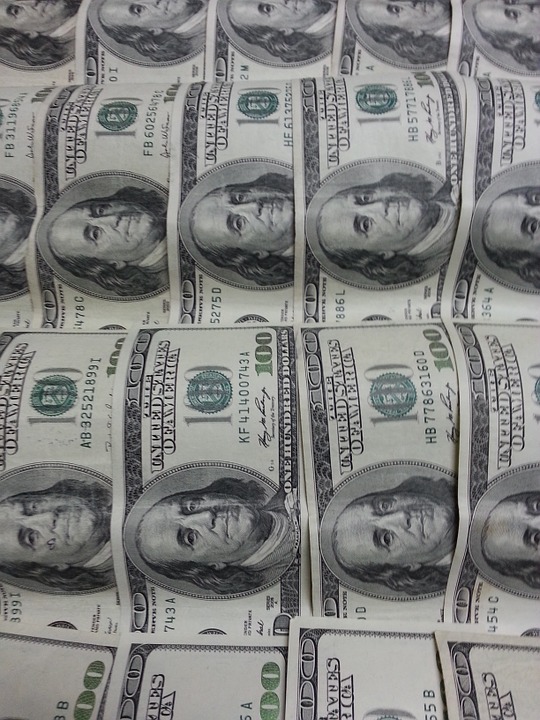by Nkem Iregbulem
This summer is the 10th consecutive summer to see an increase in the number of passengers flying. Airline for America (A4A) expects the number of passengers to rise 3.4% from 248.8 million travelers last summer to 257.4 million travelers this summer. Low airfares, higher household net worth, and a strong U.S. economy could all be driving this record high air travel. In response to this growing demand, airlines have added more seats to existing planes and increased the capacity of new ones.
Airline stocks may benefit from this busy travel season. These include Alaska Air (ALK), American (AAL), Delta (DAL), SkyWest (SKYW), Spirit (SAVE), Southwest (LUV), and United Continental (UAL). The ALK, DAL, LUV, and SAVE stocks are traded on the New York Stock Exchange, and the SKYW, UAL, and AAL stocks are traded on the NASDAQ exchange.
Alaska Airlines is the fifth largest airline in the U.S. when measured by fleet size, passengers carried, and destinations served. With its fleet size of 334, Alaska Airlines flies to over 100 domestic and international destinations. The airline is headquartered in Washington and was founded in 1932. Alaska Air has a market cap of $8.01 billion and pays a dividend yield of 2.16%. The stock trades at 14.34 times trailing earnings and at 11.10 times forward earnings. It has an excellent price-to-sales ratio of 0.95 and a price-to-book ratio of 2.02. The company boasts a 3-year revenue growth rate of 13.86% and a 5-year revenue growth rate of 9.89%.
American Airlines is the world’s largest airline when measured by number of passengers carried, fleet size, revenue, and destinations served. Founded in 1926 and based in Texas, the airline serves 350 destinations in over 50 countries. It has a market cap of $14.09 billion and pays a dividend yield of 1.26%. The stock trades at 8.26 times trailing earnings and at 6.03 times forward earnings. It has an excellent price-to-sales ratio of 0.33 and a price-to-book ratio of 1.25. The company enjoys a 3-year revenue growth rate of 2.81% and an even better 5-year revenue growth rate of 10.74%.
Delta Airlines is ranked the world’s second largest airline when measured by the number of passengers carried and fleet size. Headquartered in Georgia and founded in 1924, it serves 325 destinations across 52 countries. Delta has a market cap of $40.46 billion and pays a dividend yield of 2.59%. The stock trades at 9.86 times trailing earnings and at 8.85 times forward earnings. It has an excellent price-to-sales ratio of 0.92 and a price-to-book ratio of 2.90. With its revenue increasing each fiscal year since 2016, Delta enjoys a 3-year revenue growth rate of 2.97% and a slightly better 5-year revenue growth rate of 3.30%.
SkyWest is the largest regional airline in North America when measured by fleet size, number of passengers, and destinations served. Based in Utah and founded in 1972, it flies to over 250 destinations across in the United States, Canada, Mexico, and the Bahamas. SkyWest has a market cap of $3.11 billion and pays a dividend yield of 0.79%. The stock trades at 9.99 times trailing earnings and at 10.12 times forward earnings. It has a normal price-to-sales ratio of 1.02 and a price-to-book ratio of 1.56. SkyWest’s revenue has increased each fiscal year since 2015, giving it a 3-year revenue growth rate of 1.34% but a 5-year revenue growth rate of -0.47%.
Spirit Airlines is an ultra-low-cost carrier and the seventh largest airline in the United States. Based in Florida and founded in 1983, it serves 76 destinations across Central America, South America, and the United States. Spirit Airlines has a market cap of $2.88 billion and does not pay a dividend yield. Spirit has a fleet size of 75 and flies to 76 domestic and international destinations. The stock trades at 10.27 times trailing earnings and at 7.15 times forward earnings. It has an excellent price-to-sales ratio of 0.79 and a price-to-book ratio of 1.37. Spirit Airlines boasts a 3-year revenue growth rate of 15.77% and a 5-year revenue growth rate of 14.97%.
Southwest Airlines is the world’s largest low-cost carrier. The airline carries more domestic passengers than any other United States airline. Based in Texas and founded in 1971, it serves just over 100 destinations within the United States and 10 other countries. Southwest has a market cap of $29.82 billion and pays a dividend yield of 1.31%. The stock trades at 13.06 times trailing earnings and at 11.95 times forward earnings. It has a normal price-to-sales ratio of 1.40 and a price-to-book ratio of 3.05. Southwest enjoys a 3-year revenue growth rate of 3.48% and a slightly better 5-year revenue growth rate of 4.41%.
United Airlines is another large airline. Founded in 1926 and headquartered in Illinois, it serves over 200 domestic destinations and over 300 destinations in total across five continents. United Continental has a market cap of $24.13 billion and does not pay a dividend yield. The stock trades at 8.63 times trailing earnings and at 8.07 times forward earnings. It has an excellent price-to-sales ratio of 0.59 and a price-to-book ratio of 2.34. With its revenue increasing each fiscal year since 2016, United has a 3-year revenue growth rate of 2.94% and a 5-year revenue growth rate of 1.53%.
Maybe some of these airline stocks will be flying high.


